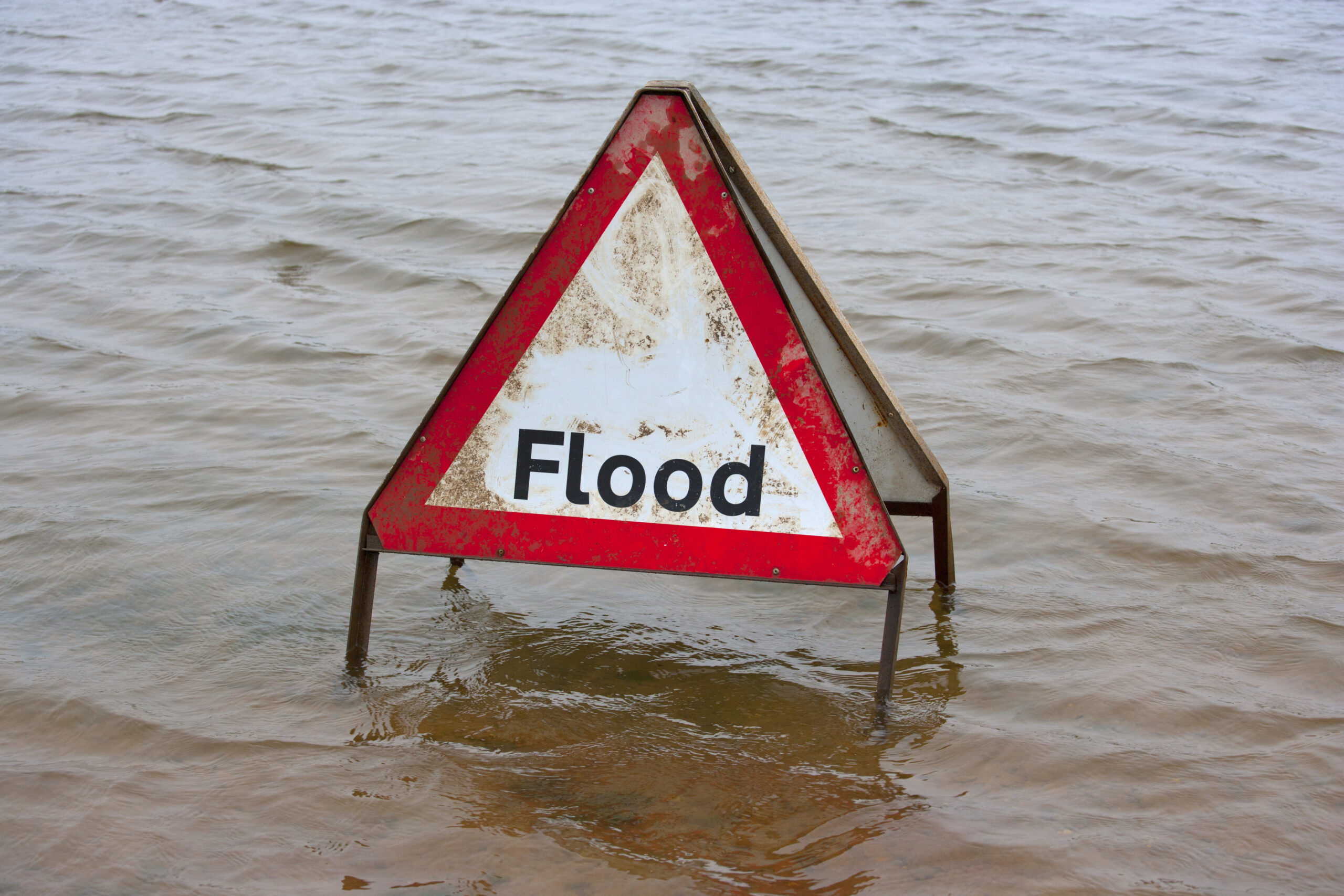
Climate Risks Series, Part 2: Flood and Storm Risk: Keeping Policyholders Afloat
Introduction
Extreme rainfall and storms have become increasingly prevalent in the UK. Figures from the Association of British Insurers (“ABI”) show that storms and heavy rain have contributed to driving up property insurance payouts to the highest level in 7 years.
During floods in September 2024, several areas of the UK experienced significant property damage. This included AFC Wimbledon’s grounds, where a sinkhole caused the football pitch to collapse, after a nearby river burst its banks due to the excessive rainfall.
This article will discuss:
- The coverage issues that policyholders could face in relation to cover for damage caused by flood and storm.
- How stakeholders can increase resilience to floods and storms.
Coverage Issues
Where policies do not clearly define what constitutes a “flood” or a “storm”
Extreme weather comes in various forms and severities. In the absence of a clear definition of “flood” or “storm”, insurers may seek to rely on metrics such as the Beaufort wind force scale, ABI definition of storm, or previous case law, to support arguments limiting the scope of policy cover depending on the particular facts.
Recent decisions from the US have held that flood exclusions did not apply to: water damage from backed-up drainage following Hurricane Ida (GEMS Partners LLC v AmGUARD Ins Co (2024), in the New Jersey district court); and water accumulating on a parapet roof after a severe storm (Zurich v Medical Properties Trust Inc (2024), in the Massachusetts Supreme Court); based on the meaning of “flood” and “surface waters” in the relevant policy wordings.
In FCA v Arch Insurance Limited [2021] UKSC 1, the UK Supreme Court confirmed that, when looking at the construction of a policy, it is necessary to consider how a reasonable person would understand the meaning of the words used, in light of the commercial context. Therefore, policyholders should ensure, prior to inception, that the policy contains appropriate and clear definitions of “flood” and/or “storm”, to prevent ambiguity in the event of a claim.
Where the weather event is a combination of “flood” and “storm”
Where a weather event may appear to be a combination of both a flood and a storm, identifying the proximate cause of the loss, i.e. the dominant cause, may be difficult without meteorological expert evidence. This can raise two separate issues.
Firstly, policies contain different sub-limits for flood or storm damage. For example, if “flood” has a lower sub-limit compared to “storm” perils, a policyholder would likely seek to argue that storm damage has occurred, to maximise cover under the policy.
Secondly, if a policy excludes either flood or storm damage, the principles derived from Wayne Tank & Pump Co Ltd v Employers Liability Assurance Corp Ltd [1974] QB 57 and The Miss Jay Jay [1987] 1 Lloyd’s Rep 32 may apply. This means that where two concurrent proximate causes operate together to bring about a loss, if one is insured under the policy and one is excluded, the loss will not be covered. If one concurrent proximate cause is an insured peril and the other is not insured, but not excluded, the loss will be covered.
Flood management measures
After the damage to its pitch, AFC Wimbledon was reportedly exploring ways to improve its flood management and infrastructure, to reduce the risk of future floods. It is likely that insurers will seek to introduce more conditions within property insurance policies, requiring certain flood management measures to be in place as a prerequisite to cover.
Flood resistance measures aim to “resist” or reduce the amount of water that enters a property. This can include the installation of flood gates or airbrick covers. Flood resilience measures purely mitigate the level of damage to property. This would include having concrete floor tiles, as opposed to carpets, and placing plug sockets away from entrances close to water.
Some property policies will contain a stillage condition precedent to liability. This will state that a policyholder will not be covered for loss caused by a flood, storm or escape of water, if it does not keep stock or other items a certain distance above floor level.
Furthermore, insurers could potentially restrict cover offered to policyholders whose buildings are situated in areas at a higher risk of flooding, or where businesses do not have mechanisms in place to deal with potential flood damage.
Why is Climate Change causing more Floors and Storms?
It is thought that the increase in the number of extreme weather events is a result of climate change.
Climate change contributes to more floods and storms because the increase in greenhouse gases in the atmosphere has allowed carbon dioxide to trap the sun’s rays. This has resulted in an increase in the planet’s temperature and the level of moisture that is held in the atmosphere. The warmer the atmosphere, the quicker the water can evaporate and fall, resulting in more intense and voluminous rainfall.
Improving Industry Resilience to Floor and Storm
The increase in natural disasters such as earthquakes, floods and hurricanes has led to some insurers pulling out of international catastrophe insurance markets. This is because of the unpredictable nature of these events and the severity of the losses suffered. This has resulted in limited options and more expensive premiums for catastrophe policies available to policyholders.
Similarly, insurers in the UK are becoming more reluctant to provide cover for damage caused by storm and flood, as the number of these types of claims increases, giving rise to the risk of a protection gap for policyholders.
Parametric Insurance
One of the tools available to help mitigate this effect is parametric insurance. This is a type of insurance cover where claims are paid on a predetermined basis. For example, cover for a storm would have parameters such that, if there is damage to property and a certain wind-speed or water depth is reached, then the policy would be triggered.
Traditional insurance policies are based on the actual loss that is sustained by the policyholder, whereas parametric insurance policies are triggered by the occurrence of an event and when certain parameters are reached. One of the main benefits of parametric insurance is the greater certainty of insurers paying out. This is especially important where there is a need for an urgent financial resource, allowing for a quicker payment to be made to policyholders.
Flood/Storm specific reinsurance schemes
For flood damage in the UK, there is a scheme in place for homeowners known as Flood Re. This scheme operates in a way where insurers can pay a premium to reinsurers and they would have access to a “pool” of indemnity when a claim arises. If the pool is exhausted, then the government can step in to pay the remainder of any losses.
The scheme is expected to provide cover until 2039 as Flood Re anticipates there will then be a “free market” for flood risk insurance. However, one can argue that this is unlikely if we see a similar pattern in the increase in extreme weather events and insurance claims over the next decade. Therefore, an alternative scheme may be needed, for businesses as well as homeowners, to ensure all policyholders have a safety net in the event of claims arising out of floods and storms.
Broader Risk Management
Increased industry resilience is likely to come from broader risk management. Currently, the UK does not have a robust plan in place to tackle flood risk. It is the responsibility of organisations such as the Environment Agency, the UK Climate Change Committee and DEFRA to collaborate and mitigate flood risk.
There have been calls for the Government to set specific flood risk targets as a result of climate change and the increase in extreme weather events. This would be an example of an initiative where input from a variety of organisations could help to reduce the risk of property damage and lead to increased resilience.
Conclusion
With the rise in extreme weather events, insurers will look to mitigate exposures and robustly defend claims arising from flood and storm damage, leaving policyholders in a potentially vulnerable position.
A collaborative response is needed to ensure that the insurance industry can adapt to emerging risks and ensure that appropriate cover is available for policyholders, in the event of floods and storms.
Author
Ayo Babatunde, Associate
Other news
Singapore’s factory output boom: Is your Business Interruption cover keeping up?
10 December 2025
In the News… is a new blog series from Fenchurch Law that translates today’s headlines into practical insights for…



